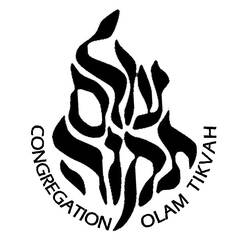Contemporary Videos
The Final Sacred Space by Anonymous
Featured in the November/December 2022 Contemporary
It was late evening when three women dressed in long skirts, wearing kerchiefs and carrying buckets and wooden boards quietly arrived at the door. There was an aura surrounding them that I never got out of my head. They were there to perform the ritual cleansing of the body. I decided then and there that at some time in the future I would join those women to perform this last mitzvah. After my mother died several years later, I realized the time had come for me to try and see why these women and their task fascinated me so much. I am generally squeamish, do not like to see blood or gore and I turn my head away from violent TV programs and movies. However, somehow I knew this was not one of those situations and the deceased deserves all the respect and concern that we can give. I was ready to watch and participate in my first tahara.
Five of us entered the very chilly room that had white metal cabinets filled with towels, rubber gloves and aprons, a variety of personal care items, a gurney with the body, pulleys, and a sink. We prepared the coffin by placing straw in the coffin, making a mound for her head. We put a sheet catty corner into the coffin. This sheet is the final covering for the mais, the term I learned that is used for the body. Next we put the Jewish star on the cover of the coffin and we all carefully checked that we had it exactly in the middle.
After confirming that we had the right person, we donned the aprons and rubber gloves and the other four women began to very carefully clean the nails of the deceased while I read some prayers and instructions. At first I could not understand why they took so much pains with this task - after all who would know? But I quickly understood that these women wanted to make sure that this person will go to her resting place with dignity and that her family will have the comfort knowing that we did all that we could to make sure she was prepared correctly.
Next we washed the right side of the mias (body), then the left; then we poured cleansing water over her, again right side then left. We put boards under her so we could completely dry her. We had to roll her from side to side so we could reach all parts when we dried her. Very little conversation took place! Only what was needed to perform the tasks! “Be careful of her head; there seems to be an open sore here – let’s put a bandaid on it; her privacy towels are slipping; - I’ll fix it; “one, two, three roll her to our side so we can dry her – okay, one, two, three, now we will roll her to your side.”
Putting on the shrouds presented other problems. The pants were easy. Putting a bonnet on her head and covering her face was also easy. The two jackets presented other challenges, until someone remarked that we should put the jackets on the Montessori way like her children learned in preschool. Put the arms in first, then over the head. It really worked and made our task easier. Again we had to roll her from side to side to make sure the jacket was smooth, not unlike swaddling a baby. The next challenge was to encompass the mais with a white cloth ribbon and tying if off in the letter shin. It took several times to get the knot to stay in the shape of a shin, but we were determined to do it correctly.
The pulleys helped get the body into the already prepared coffin and with all of us working together we completed our task. Finally, we put pottery shards on the eyes and mouth and sprinkled dirt from Israel into the coffin. We covered the mais with the sheet, but this time we started on the left side. We put the cover on the coffin, making sure to line up the peg holes accurately, so the coffin would be closed tightly.
We shared a moment of silence and asked Mekellah to forgive us if we did not prepare anything correctly. Our final act was to place the coffin facing the door, so her feet would lead. We checked to make sure the shomer was there, quietly left the building, ceremoniously washed our hands and said the blessing. No small talk was exchanged. No, ‘see you tomorrow; are you going to the OT dinner tomorrow night?’ We wished each other a safe journey home and headed to our cars.
I still do not why this mitzvah holds an attraction for me, but that first image of the three women and the care and respect they have for the deceased has stayed with me and inspires me to ensure that to the best of my ability each mais will be properly prepared for her final sacred place.
The Ban on Books by Morah Melissa Schwartz
Featured in the March/April 2022 Contemporary
The seventh grade class has discussed a variety of current event topics since the start of the school year. We have discussed accurate portrayals of characters in movies, inclusion, as well as the concept of public figures as role models. No topic garnered as much passionate discussion as the proposed ban on books. Our discussion did not start with the ban on Maus, it started with the proposed ban and “book burning” in Spotsylvania County of which I am a resident. The students felt that the banning of any books was wrong and harkened back to the era of Nazi soldiers burning books by Jewish authors. In Spotsylvania County, books that covered topics such as LGBTQ issues, suicide, depression, and others were on the block to be banned. The students felt that denying teens and young adults the opportunity to read these books would be denying them the opportunity to see characters facing issues they were facing as well. The discussion then moved to parental involvement in what children read, as well as the
involvement of schools or government in controlling what books are offered in libraries and bookstores. The students all agreed that parent involvement was important but differed on what extent that took.
When the subject came up a week or so later about the banning of Maus, the students felt that banning books about the Holocaust felt more personal to them. They were outraged as Jewish teens and also confused as to what possible cause could a school board determine to ban this book. Using Maus as our guide, we have started our Holocaust curriculum and the proposed ban on Maus has served as our springboard to dive into this topic.
Contemporary Videos
Interview with Rabbi Viki Bedo
Interview featured in the September/October 2021 Contemporary
Question 1: Welcome to OT! We are thrilled that you are going to be our new Assistant Rabbi. You’ve just started to meet our Congregation, what are your first impressions?
Question 2: You have not only chosen Judaism, but chosen to lead as a Rabbi. What motivated you?
Question 3: As you were exploring your Judaism, what drew you to Conservative Judaism?
Question 4: What is your favorite Jewish holiday and why?
Question 5: Each Rabbi is unique, bringing particular strengths, enthusiasm and gifts. What should the Congregation look for as your Rabbinic “super powers?”
Question 6: You are coming to OT at a unique time in the world, when we seek to reengage and reconnect with each other. Is there any inspiration from the Torah, Talmud or Jewish history that you are looking to energize your first year with us?
Question 7: As a new parent, what do you look forward to at OT? Tell us a little about your experience!
Question 8: What do you hope to accomplish at OT?
Interview with Mala Hod, Shlicha
Interview featured in the September/October 2021 Contemporary
Tue, April 16 2024
8 Nisan 5784
Today's Calendar
| Maariv : 8:00pm |
Tomorrow's Calendar
| Shacharit : 8:15am |
| Maariv : 8:00pm |
Friday Night
| Kabbalat Shabbat : 6:15pm |
| Candle Lighting : 7:33pm |
Shabbat Day
| Shabbat Service : 9:30am |
| Childcare and Youth Services : 10:00am |
| Havdalah : 8:42pm |
Happening at OT
-
Sunday ,
AprApril 21 , 2024Chametz Sale Deadline
Sunday, Apr 21st 12:00p
-
Sunday ,
AprApril 21 , 2024NOVA Jewish Teen 3-on-3 Basketball Showdown
Sunday, Apr 21st 2:00p to 5:00p
Come show off your basketball skills at this 3-on-3 basketball showdown. Teens of all skill levels are welcome to play. -
Sunday ,
AprApril 21 , 2024Moti's Passover Prepared Food Delivery
Sunday, Apr 21st 4:00p to 4:30p
Don't want to cook all week? Order prepared dishes for your seder and beyond. -
Monday ,
AprApril 22 , 2024Shacharit & Fast of the Firstborn Siyyum
Monday, Apr 22nd 8:00a to 9:00a
The Fast of the Firstborn (Ta’anit Bechorim) commemorates the horrific tenth plague that God inflicted on Pharaoh and the Egyptian people. In recognition of this moment, firstborn Jews fast on Erev Pesach. As this is a minor fast, there is a widely practiced exemption: Judaism allows anyone who attends a religious feast to forego fasting. It is customary to hold a celebratory meal on the completion of study of a piece of text, called a siyyum (conclusion). Whether you are a firstborn relieving yourself from the pre-Pesach fast, or anyone else simply looking to learn a little, come join us for the siyyum. After the siyyum, we will celebrate with a light breakfast. -
Tuesday ,
AprApril 23 , 2024Passover Service Day 1
Tuesday, Apr 23rd 9:30a to 12:00p
Celebrate the first day of Passover.




